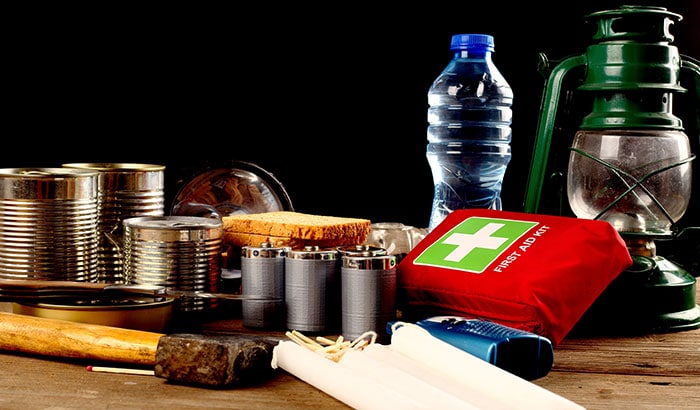Floods, fires, power outages, and other disasters could strike at any moment, so it’s best to be prepared with an at-home emergency kit.
Creating a personalized emergency kit is simple if you know what to include in it. If you don’t have an endless supply of time, money, or room, here are our top picks for the most essential items you should invest in.
Portable Water Filter
Grabbing a case of water isn’t very manageable as you make an emergency exit from your home, but a portable water filter can easily fit inside any bag. If you find yourself without a clean water source, this device uses a microfiltration membrane to remove 99.9 percent of parasites, microplastics, and bacteria.
First Aid Kit
Injuries can happen at any time, so make sure you pack a portable first aid kit in your emergency bag. This should include basic items such as bandages in various sizes, gauze, burn ointment, antibiotic ointment, sterile gloves, pain relievers, soap, tweezers, and sterilized wipes.
Flashlight and Extra Batteries
When the power’s out, a flashlight is a lifesaver. Be sure to pack extra batteries in your emergency stash as well. If you don’t have the storage space for batteries, you could invest in a battery-free flashlight instead. This type of flashlight is powered by solar energy and hand-crank technology.
Emergency Blankets
Emergency blankets have a wide range of uses that make them a useful addition to any survival kit. These blankets are excellent at retaining body heat and are waterproof, windproof, and moisture-resistant. They would make a great ground tarp, rain poncho, table cloth, shelter tent, and more.
Radio
You never know how much cell service will be available in the event of an emergency or disaster. A radio is essential for receiving crucial emergency information, such as weather or evacuation alerts. Any hand-cranked or battery-operated radio can be extremely helpful in these situations.
Non-Perishable Food
Perhaps the most important thing to include in your emergency kit is a three-day supply of non-perishable food. Choose foods that don’t require special preparation or refrigeration, and check the expiration dates often to ensure that your supply stays fresh.
Any Specific Personal Needs
The American Red Cross reminds you to consider the needs of all family members as you add supplies to your kit. This might include:
- Personal medical supplies (contact lenses, hearing aids, diabetic supplies, prescription medications, etc.)
- Baby supplies (diapers, wipes, formula, baby food, etc.)
- Pet supplies (collar, food, bowl, leash, etc.)
- Small games and activities for children
Let Black Diamond Restoration Help
If you’ve ever been in a situation where you’ve used an emergency kit, you could likely use home restoration services; that’s where Black Diamond Restoration comes in. We specialize in restoring homes with flood, fire, storm, and mold damage back to their former glory.
We are based out of Murray, Utah, and proudly serve Salt Lake City and the surrounding areas such as Midvale, West Jordan, Sandy, and more. Contact us for a free quote today!







